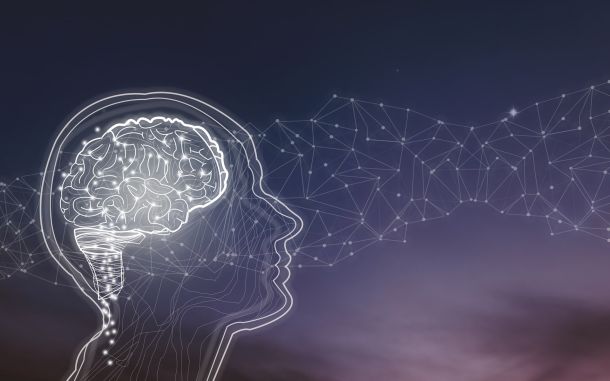Unplugging the Mind: Reclaiming Focus in the Age of Distractions

In This Article
-
It is crucial to acknowledge that attention is a finite resource within our cognitive framework, prompting our brains to employ the mechanism of selective attention as a means to efficiently filter and process information.
-
Multitasking is merely an illusory phenomenon, as our cognitive architecture does not possess the inherent capacity to effectively manage multiple tasks simultaneously.
-
In the intricate landscape of human cognition, it is imperative to recognize that the sway of external distractions, while undoubtedly substantial, should not overshadow the profound impact of internal distractions that emanate from the depths of our own consciousness.
Have you ever found yourself lost in the mesmerizing abyss of social media, only to realize hours have slipped away? Or perhaps you've struggled to complete a task, constantly succumbing to the allure of notifications and buzzing smartphones. In our rapidly evolving and interconnected world, distractions have become an integral part of our daily lives. They have transitioned from being occasional disruptions to becoming the prevailing norm. We find ourselves continuously besieged by a plethora of stimuli, each clamoring for our attention and diverting us from what is truly significant. However, take solace, for within the realm of psychology lies the solution to tapping into our innate abilities for unwavering concentration. To understand this solution, it’s crucial to explore the intricacies of cognitive psychology concerning the phenomenon of attentional diversion.
At its essence, distraction can be seen as the disturbance of our attention—a formidable obstacle that redirects our mental energy away from the current undertaking. In a world saturated with abundant information and ubiquitous technology, distractions have proliferated like blooming flowers in spring. We find ourselves captivated by the enticing allure of social media notifications, the ever-present temptation of staying constantly connected, and the desire to engage in multiple tasks simultaneously, all of which fracture our ability to concentrate. But why do we struggle so fiercely to resist these distractions? To unravel this mystery, we must delve into the intricate mechanisms of our cognitive processes.
The psychology of distraction
Our brains are remarkably adaptable, capable of both focused attention and rapid task-switching. However, engaging in multitasking or succumbing to distractions comes at a cost. Think of your mind as a beautiful garden, nurtured by the soil of attention and concentration. When tended to with care, it flourishes with vibrant thoughts, deep insights, and meaningful connections. However, when bombarded with distractions, it becomes an overgrown thicket, choked with the weeds of scattered thoughts and fragmented focus. The incessant notifications, the blinking screens, and the constant barrage of information are the assailants that threaten the serenity of our mental landscapes.
The fallacy of multitasking
The human inclination to derive satisfaction from our proficiency at multitasking, considering it an extraordinary capability facilitating enhanced productivity within limited time, is a common practice. Nonetheless, scholarly investigations put forth a compelling argument, indicating that multitasking is merely an illusory phenomenon, as our cognitive architecture does not possess the inherent capacity to effectively manage multiple tasks simultaneously. Neuroscientist Earl Miller supports this notion, affirming that the intricate neural circuitry within our brains is not optimally configured to engage in seamless multitasking; rather, what we perceive as concurrent task execution is, in reality, a swift transition from one task to another. This constant shifting engenders a cognitive burden, detrimentally influencing our capacity to engage in profound concentration on any given task.
The pull of external distractions
Our brains have limited cognitive resources, and dividing our attention between multiple stimuli taxes these resources, leaving us with reduced cognitive capacity for each task. One of the primary contributors to distraction is our innate need for novelty. Embedded within the intricate neural framework of our brains lies an inherent predisposition to actively pursue novel and stimulating stimuli—a trait that has played a pivotal role in our existence. Regrettably, in the context of the contemporary world, this innate propensity becomes susceptible to manipulation and exploitation due to the ceaseless influx of information, subsequently entangling us in the quagmire of perpetual distraction.
Social media platforms and other attention-grabbing technologies exploit these innate tendencies, offering a constant stream of novel content and instantaneous feedback. They hijack our attention spans by triggering a primal urge for information and social validation. As we fall deeper into the rabbit hole of distraction, our ability to focus wanes, and our overall productivity suffers.
Moreover, the omnipresence of digital devices and their associated notifications trigger what psychologists call "intermittent reinforcement." Every ping, buzz, or vibration promises a potential reward, triggering a release of dopamine, a neurotransmitter associated with pleasure and motivation, creating a positive reinforcement loop that encourages future indulgence in distractions. This intermittent reinforcement strengthens the habit of constantly checking our devices, making it increasingly difficult to resist distractions.
The battle within: internal distractions
In the intricate landscape of human cognition, it is imperative to recognize that the sway of external distractions, while undoubtedly substantial, should not overshadow the profound impact of internal distractions that emanate from the depths of our own consciousness. It is within these recesses that our minds embark on whimsical voyages, meandering along the convoluted pathways of daydreams, anxieties, and tangential ruminations. This intriguing phenomenon, widely acknowledged as mind-wandering, stands as an inherent function of our cerebral apparatus, yet its unbridled manifestation proves detrimental to our capacity for sustained focus.
In the relentless pursuit of understanding this enigmatic realm of cognitive detours, a compelling investigation undertaken by the eminent psychologists Matthew Killingsworth and Daniel Gilbert revealed an intriguing facet of our mental terrain. Their seminal study unearthed that an astonishing 47% of our waking hours is consumed by the idiosyncratic activity of mind-wandering. Astonishingly, irrespective of the specific task at hand, the prevalence of discontentment exhibited an intimate correlation with the occurrence of such mental excursions.
Understanding the cognitive processes involved
In order to reclaim our cognitive focus and delve deeper into the intricacies of our mental processes, it is imperative to comprehend the underlying mechanisms governing both distraction and attention. It is crucial to acknowledge that attention is a finite resource within our cognitive framework, prompting our brains to employ the mechanism of selective attention as a means to efficiently filter and process information. However, the advent of distractions introduces a serious challenge, as they possess the potential to divert this invaluable resource away from our intended tasks.
Drawing upon the Stroop effect, a renowned and timeless psychological experiment, we can shed further light on the formidable hurdles encountered in the pursuit of sustained concentration. This experimental paradigm involves the presentation of color names printed in ink colors that are incongruent with the semantic meaning of the word (e.g., the word "red" written in blue ink). Astonishingly, participants consistently exhibit significant delays in response time and an increased susceptibility to errors when confronted with such incongruity between the word and the ink color. This striking phenomenon serves to expose the disruptive nature of distractions, as they unabashedly interfere with the delicate cognitive processes at play, thereby hampering our ability to maintain a focused state of mind on the designated task.
Top of Form
Extensive investigations in the field of neuroscience have unveiled that distraction prompts the activation of a neural network known as the default mode network (DMN) within our cerebral framework. The DMN assumes responsibility for facilitating an array of cognitive processes, including mind-wandering, daydreaming, and engendering self-referential thoughts. Undoubtedly, these mental activities play an integral role in fostering creativity and introspection, bestowing upon us a profound capacity for imaginative ideation and insightful contemplation. Nevertheless, when these cognitive functions encroach upon the domain of focused tasks, their unwelcome intrusion can inflict a substantial detriment upon our productivity and efficacy.
To circumvent this predicament, it becomes important to discern the underlying dynamics at play and, armed with such awareness, actively channel our attention away from the snares of the default mode network. By consciously redirecting our mental faculties, we can disentangle ourselves from the captivating allure of mind-wandering and self-referential ruminations, thus fostering a steadfast resolve to remain unwaveringly focused on the immediate task at hand.
Reclaiming focus
Unplugging our cognitive faculties from the relentless onslaught of diversions presents a daunting endeavor, yet it remains within the realm of achievability. It necessitates a purposeful and cognizant exertion to fashion an atmosphere that fosters concentration. Here are a handful of pragmatic recommendations to embark upon this pursuit:
- Mindful cognizance: Cultivating a state of mindful cognizance is of paramount importance at discerning the advent of distractions. By conscientiously attending to our ruminations and emotions, we can ascertain the stimuli that divert us from our intended course and subsequently re-establish mastery over our focal capacities.
- Optimization of the surrounding environment: The establishment of an environment that fosters unwavering concentration is also of paramount significance. When trying to focus, we should attenuate the potential disruptions by deactivating notifications, allocating distinct areas exclusively for undisturbed work, and implementing temporal segments devoted entirely to consequential undertakings.
- Digital detox: Engaging in periodic disconnection from the realm of online existence can bestow remarkable benefits upon our attention spans. Assign specific intervals during the course of a day or week for a deliberate digital respite, wherein you conscientiously detach yourself from technological devices and immerse yourself in pursuits that cultivate profound concentration and invigoration.
- Cognitive segmentation: Fragmenting complex endeavors into more manageable and bite-sized components is an effective strategy to assuage the difficulty of extensive undertakings. By establishing explicit objectives and fixating solely on one segment at a time, we augment our cognitive aptitude to concentrate, concurrently diminishing the allure of divergences.
- Conscious technological engagement: Rather than indulging in a mindless perusal of social media platforms, approach the realm of technology with deliberation and purpose. Erect boundaries on its utilization, exercise discernment in selecting which engagements to partake in, and exhibit mindfulness in relation to the content consumed. Opt for quality over quantity and harness technology as a facilitative instrument that elevates productivity, rather than allowing it to incessantly permeate as an incessant fount of distraction.
In the face of an era inundated with ceaseless distractions, the reclamation of our focus emerges as an act of rebellion—an intentional decision to nurture our cognitive faculties and carve out room for profound endeavors and genuine human connections. Armed with insights into the psychology of distraction—and armed with effective strategies to counteract its influence—we are poised to forge a path toward a harmonious and gratifying existence.
Together, let us embark upon this transformative journey, liberating our minds from the tumultuous current of diversions and rediscovering the exhilaration of undivided attention. In the tranquil realm of focused presence, we unveil the boundless potential for personal growth, unbridled creative ingenuity, and an enriched understanding of both ourselves and the intricate tapestry of the world that surrounds us.
As we forge ahead, may we stand united in our resolve to unplug, reinvigorated by the knowledge that the pursuit of a focused life is not only attainable but essential to our well-being and fulfilment. Let us embrace this rebellion against distraction, nurturing a balanced and purposeful existence that celebrates the innate capacity of our minds to explore, create, and connect in ways that transcend the limitations imposed by the clamor of the modern age.
References
- Hambrick, D. Z., Oswald, F. L., Altmann, E. M., Meinz, E. J., Gobet, F., & Campitelli, G. (2014). Deliberate practice: Is that all it takes to become an expert? Intelligence, 45, 34-45.
- Killingsworth, M. A., & Gilbert, D. T. (2010). A wandering mind is an unhappy mind. Science, 330(6006), 932-932.
- Miller, E. K. (2013). The prefrontal cortex and cognitive control. Nature Reviews Neuroscience, 1, 1-12.
- Newport, C. (2016). Deep Work: Rules for Focused Success in a Distracted World. Grand Central Publishing.
- Rosen, L. D., Carrier, L. M., & Cheever, N. A. (2013). Facebook and texting made me do it: Media-induced task-switching while studying. Computers in Human Behavior, 29(3), 948-958.









